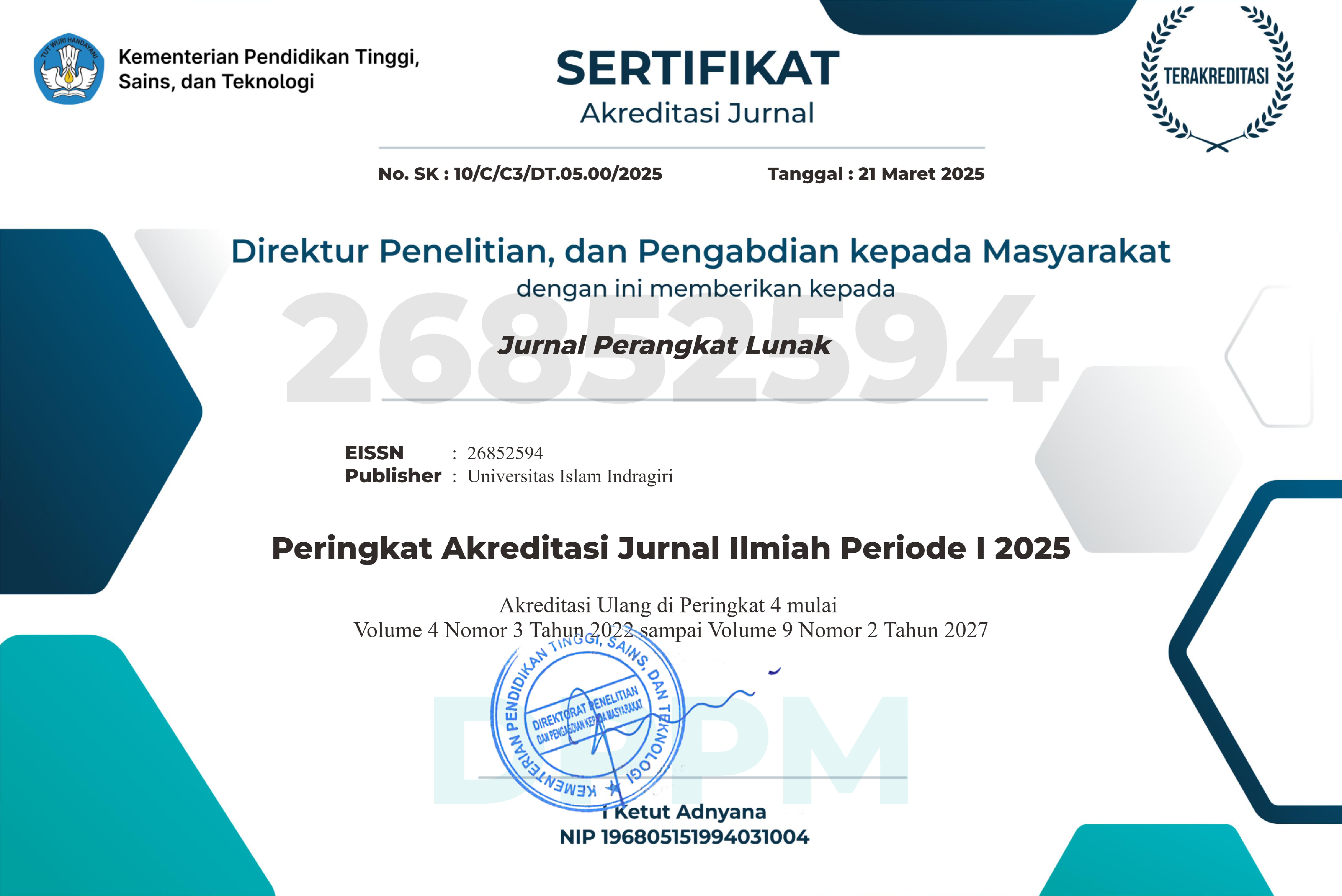USABILITY ANALYSIS OF CAMSCANNER APPLICATIONS USING THE SYSTEM USABILITY SCALE (SUS) METHOD
Abstract
In the current digital era, technology has transformed the way we work and interact with the world around us. One significant development is the ability to convert physical documents into a digital format using scanning applications. One popular application for this task is CamScanner. This research aims to measure the CamScanner application's usability level using the System Usability Scale (SUS) analysis. The research method is a quantitative descriptive approach, aiming to provide a structured, accurate, and up-to-date understanding of the researched object. Data collection was conducted using a questionnaire created with Google Forms and distributed to 30 respondents. The findings of this research indicate that the CamScanner application exhibits usability with an acceptability level of "Acceptable," a grade of "B," and an adjective rating of "Good." This conclusion is based on calculating the average questionnaire score, which yielded a value of 74.2.
Downloads
References
[2] M. Sulistiyono, “EVALUASI HEURISTIC SISTEM INFORMASI PELAPORAN KERUSAKAN LABORATORIUM UNIVERSITAS AMIKOM YOGYAKARTA,” Jurnal Ilmiah Data Manajemen dan Teknologi Informasi (DASI), vol. 18, no. 1, pp. 37-43, 2017.
[3] P. Krisnayani, I. K. R. Arthana dan I. G. M. Darmawiguna, “Analisa Usability Pada Website UNDIKSHA Dengan Menggunakan Metode Heuristic Evaluation,” Kumpulan Artikel Mahasiswa Pendidikan Teknik Informatika (KARMAPATI), vol. 5, no. 2, pp. 158-167, 2016.
[4] U. Ependi, T. B. Kurniawan dan F. Panjaitan, “SYSTEM USABILITY SCALE VS HEURISTIC EVALUATION: A REVIEW,” Jurnal SIMETRIS, vol. 10, no. 1, pp. 65-74, 2019.
[5] A. Bangor, P. Kortum dan J. Miller, “Determining What Individual SUS Scores Mean: Adding an Adjective Rating Scale,” Journal of Usability Studies (JUS), vol. 4, no. 3, pp. 114-123, 2009.
[6] A. Sidik, “Penggunaan System Usability Scale (SUS) Sebagai Evaluasi Website Berita Mobile,” Technologia, vol. 9, no. 2, pp. 83-88, 2018.
[7] Yuliadi, Julkarnaen dan Rodianto, “PROTOTYPE USER INTERFACE CUTI PEGAWAI PADA DINAS TENAGA KERJA DAN TRANSMIGRASI SUMBAWA BERBASIS LOCAL ARE NETWORK (LAN),” Jurnal Informatika Teknologi dan Sains (JINTEKS), vol. 3, no. 2, pp. 349-353, 2021.
[8] R. Hakim, A. Nirwana, A. Fyona, Widodo dan B. . H. Irawan, “STUDI MULA PEMBUATAN PURWA-RUPA SMARTPHONE DOCUMENT SCANNER STAND DENGAN METODE TAGUCHI,” Jurnal Teknologi dan Riset Terapan (JATRA), vol. 3, no. 1, pp. 32-36, 2021.
[9] S. Surahman dan E. B. Setiawan, “Aplikasi Mobile Driver Online Berbasis Android Untuk Perusahaan Rental Kendaraan,” ULTIMA InfoSys, vol. 8, no. 1, pp. 35-42, 2017.
[10] J. Brooke, “SUS: A Retrospective,” Journal of Usability Studies (JUS), vol. 8, no. 2, pp. 29-40, 2013.
[11] R. Ulfa, “MENGUKUR KEPUASAN PENGGUNA SISTEM INFORMASI BIMBINGAN KONSELING (E-BK) MENGGUNAKAN SYSTEM USABILITY SCALE (SUS) DI SMK NEGERI 1 BANDA ACEH,” UIN AR-RANIRY, Banda Aceh, 2021.
[12] A. F. Cobantoro, “Rancang Bangun Purwarupa Aplikasi Electronic Point Of Sales (EPOSAL) Berbasis Web Pada Mina Alumunium,” Jurnal Ilmiah NERO, vol. 3, no. 2, pp. 109-116, 2017.
[13] D. Setiawan dan S. L. Wicaksono, “Evaluasi Usability Google Classroom Menggunakan System Usability Scale,” Walisongo Journal of Information Technology (WJIT), vol. 2, no. 1, pp. 71-78, 2020.
Copyright (c) 2023 Bagas Yana Prayoga

This work is licensed under a Creative Commons Attribution-ShareAlike 4.0 International License.












